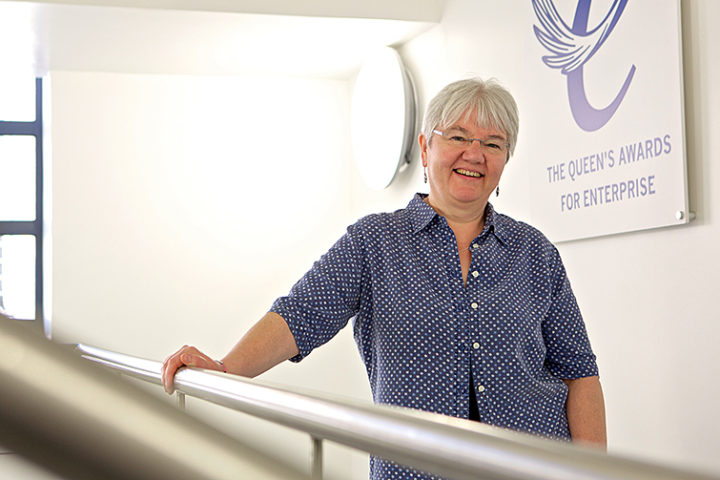Date published: 29/10/18

Liz Towns Andrews is a member of Translate’s Advisory Board, where her expertise in forging links between the worlds of business and academia has been invaluable. As Director of Research and Enterprise at the University of Huddersfield, Liz led the development of the University’s flagship 3M Buckley Innovation Centre (3M BIC). The centre has become a highly successful regional hub, supporting both spin-in and spin-out ventures. In 2013, Liz was awarded the Queens Award for Enterprise Promotion, recognising the role she has played in promoting entrepreneurship in the region. Here, she shares her advice for successful collaborative innovation.
1. Learn to speak two languages
Years ago, when I was Director of Innovation for the Science and Technology Facilities Council, I realised that taking an academic into a business meeting could often be counter-productive. They would talk at length about the specifications of the technology they had developed, but wouldn’t manage to get across what problems it can solve – or how exciting it might be!
I started to understand that you need a foot in both camps. You need to be able to grasp the languages spoken by both academics and business. Once you can get a dialogue going, you find the differences are much more to do with perceptions than about reality. They start to fall away and then you can start to find common ground.
2. Help build the business pyramid
Businesses need far more than simply access to finance if they are to grow successfully. They need access to market, and those early deals. Later they might need finance for developing new concepts, products and technologies, and after that they need access to skills and research and development expertise.
You could imagine this as a pyramid – the basic things like business security and cash flow are towards the bottom, with more sophisticated needs further up. In order to help businesses on that journey, you have to help with the basics and support their development towards the higher end services that we, as a university, are really well-placed to deliver. At 3M BIC, we’ve provided a one-stop shop for all those services, forging partnerships with intermediaries who can help with things like accountancy, or business plan development to make it as easy as possible to get the right support in those early stages.
3. Deliver access to technology
It’s one thing to help businesses get off the ground and develop to the point where they might need access to university skills – but how do you persuade academics that they want to work with industry? One approach we’ve used is to offer access to technology. We’ve been able to bring in grant funding to purchase capital equipment that augments what is already available in the University. Researchers have access to this kit, on the understanding that its primary purpose is for engagement with industry.
These investments tick a lot of boxes with our business partners as well. By getting access to equipment they would not otherwise be able to afford, they can de-risk their innovation processes, experimenting on a pay-as-you-go basis.
4. Lead by example
The 3M Buckley Innovation Centre first opened five years ago and now it operates as a stand-alone business. By attracting ‘spin-in’ companies to co-locate in the University and develop their R&D potential, we’ve created an environment where research intensity can build. That’s contributed to the University’s own IP development – and, as that expands, the resulting spin-out companies have a home where they can start to grow.
We’ve shown how successful this model can be. As a result, we’re getting regular visits from other universities who are looking to emulate our example. Our story is even gaining international attention – I am currently participating on an international advisory board with a university in Chile which is exploring ways to boost innovation and business engagement.
5. Understand the innovation landscape
We’re in the early stages of planning 3M BIC2. For that to be successful, we need to be able to reflect on our successes, but also recognise things we should do differently. In particular, we need to work harder to really understand the demographics of the Leeds City Region and where we sit within that – and where the business opportunities are. We can see, for example, that medtech and rail are key growth sectors, but there are older industries, such as textiles and manufacturing, that could thrive if we can innovate and transform them through digital technologies.
I really believe that innovation occurs at boundaries. When you bring people together from different sectors and disciplines, that’s where you get great new ideas. That’s as true for us as it is for the businesses we support. We need to be listening continually to our partners and trying out new ways to engage, support and grow.







